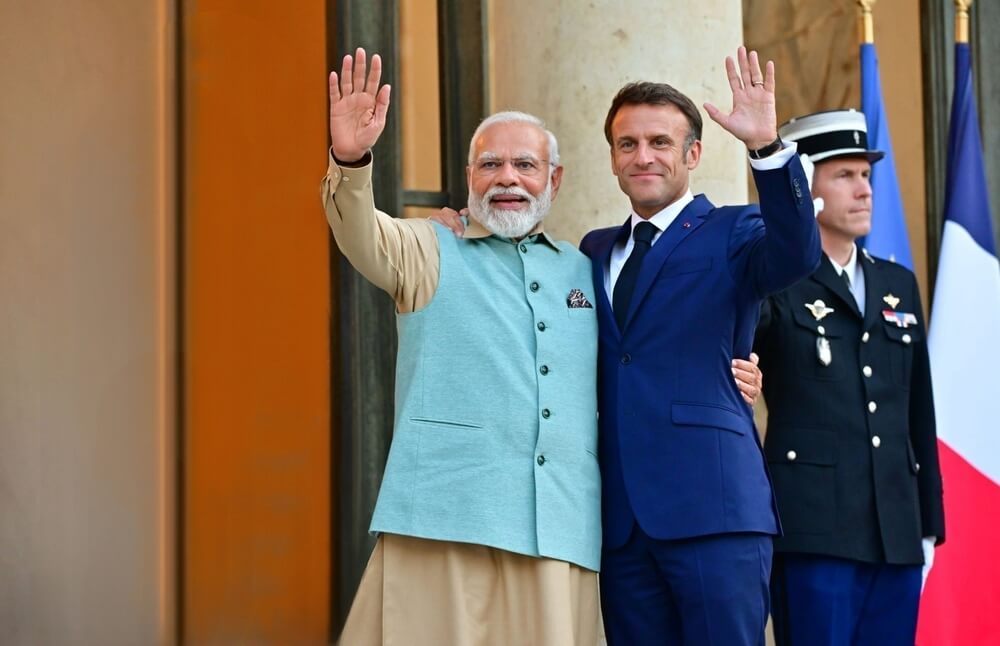India and France will start talks on Thursday on the terms for the purchase of 26 Rafale Marine jets, India's latest major investment in modernising its military.
The French and Indian government teams expect to finalise talks on the deal, previously estimated at around $6 billion, by the end of the fiscal year.
The package will strengthen and modernise India's naval forces, as well as accelerate India's shift away from Russia. India has been one of Russia’s biggest arms buyers for decades.
The latest generation of fighter jets is coming to India as a reinforcement of India's naval forces and will be commissioned on the aircraft carriers INS Vikrant and INS Vikramaditya.
This is India's second, slightly smaller acquisition of French aircraft. Despite the internal financial scandal that followed the 2016 order of 36 Rafale jets, the order was fulfilled six years later, when it was confirmed that India received all the aircraft.
To some extent, India will alter the structure of its air force, previously dominated by Russian and Soviet aircraft, with a total of 62 French Rafale aircraft.
This applies in particular to the naval forces, where the new French aircraft are to replace the Soviet MiG-29s, of which there are still around 40.
Of the fighter jets, the Indian Air Force still has a total of around 300 Su-30s and 29 MiGs, meaning that the French aircraft (which have been in service since mid-2022) still make up a smaller part.
Trend of shift away from Russia
However, the trend that India has been following in recent years clearly shows the gradual move away from Russia as the principal supplier to the Indian armed forces and the transition to mainly Western manufacturers.
Although this trend has been ongoing for several years, it has recently accelerated. One of the proofs of this is the rapid resolution of the acquisition of French naval aircraft.
"We are not likely to sign any major military deal with Russia" - Nandan Unnikrishnan
"We are not likely to sign any major military deal with Russia," said Nandan Unnikrishnan, a Russia expert at New Delhi think tank the Observer Research Foundation, last January.
Considering that the first deliveries of the S-400 air defence system took place in late 2021 (just before the Russian invasion of Ukraine), there has hardly been a significant Indo-Russian arms deal.
Nearly 60 per cent of the Indian armed forces' arsenal still consists of Soviet and Russian-made weapons, as India was among the top four buyers of Russian weapons for decades.
An irreversible trend
However, since the Russian invasion of Ukraine, there has been a significant, catastrophic decline in Indo-Russian commercial cooperation in the purchase and sale of arms (a decline of almost 40%), and this trend is irreversible, given the Indian government's new deals regarding major arms purchases in the West.
Even before Russia's aggression against Ukraine, India faced challenges in their cooperation, particularly due to significant delays in the delivery of Russian systems, their deteriorating quality, and maintenance issues.
Since Russia's invasion of Ukraine, India has immediately cancelled several large purchases
Since Russia's invasion of Ukraine, India has immediately cancelled several large purchases. The first of these was the purchase of 48 Mi-17 V5 helicopters.
In the early months of Russian aggression, Defence Minister Rajnath Singh stated that this war underscores the country's need to rely on its own strengths in the defence sector.
This is why the Russian military-industrial complex has become one of the biggest victims of India's ambition to produce as many weapons as possible for its army as part of the government's "Make in India" industrialisation strategy.
Under this programme, the Indian armed forces are required to initially source their weapons from domestic manufacturers. However, given the ever-growing demand and defence budget, the domestic industry will no longer be able to meet the requirements, and there will still be a lot of scope for imports.
The West produces together with India
However, Russia has been experiencing losses as one of the sellers in a year when India is the world's fourth largest arms buyer, with a steady increase in its military budget, which now stands at around $84 billion.
Russia's aggression against Ukraine has disqualified it in several ways. Firstly, Russia has prioritised war requirements over fulfilling its obligations to customers.
 India has been actively involved in significant long-term partnerships with Western governments, particularly in joint production projects within the defence industry - Narendra Modi with Emmanuel Macron
India has been actively involved in significant long-term partnerships with Western governments, particularly in joint production projects within the defence industry - Narendra Modi with Emmanuel Macron
Moreover, buying weapons from Russia is practically impossible today, as this is a direct violation of the sanctions. Even if the war were to end immediately, it would take a long time for Russia to return to the traditional Indian market.
India has been actively involved in significant long-term partnerships with Western governments, particularly in joint production projects within the defence industry. General Electric (USA) collaborates with India to produce jet engines for domestic fighter jets, while France contributes to the production of submarines and helicopters.
Russia, which views New Delhi as a model for the expansion of its domestic industry, suffers in this regard because it is unable to enter into joint production agreements with India due to its significant war expenditures and the focus of its defence industry on military needs.
Geopolitical reasons also play a role in India turning its back on Russia when it comes to procuring military equipment, despite the fact that the two have traditionally been important trading partners in this area.
Although India is in principle neutral regarding the Ukraine war and has not imposed any direct sanctions on Russia, it has shown interest in the alliance with its recent major defence deals with Western partners, especially in the Indo-Pacific region.